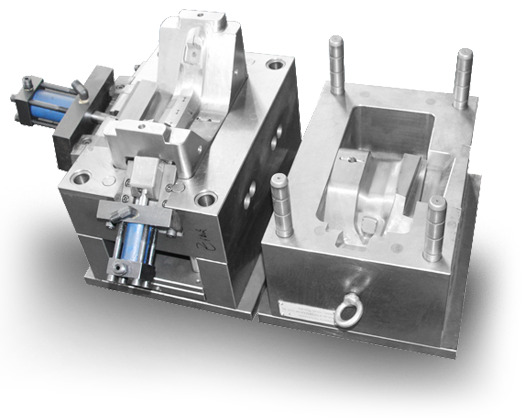หากปัญหาเหล่านี้เกิดขึ้นในเครื่องจักรกลซีเอ็นซีจะจัดการอย่างไร?
2020-03-28ฉันพบสภาวะผิดปกติบางอย่างในระหว่างการประมวลผล CNC ถ้าฉันจะจัดการกับมันตอนนี้ฉันจะแบ่งปันให้ทุกคน ~~
ขั้นแรกให้ชิ้นงานถูกตัดทับ:
the reason:
1, the knife, the strength of the tool is not too long or too small. Causes the tool to bounce.
2. Improper operation by the operator.
3. Uneven cutting allowance. (Eg: 0.5 on the side of the surface and 0.15 on the bottom)
4. Improper cutting parameters (such as too large tolerance, too fast SF setting, etc.).
ปรับปรุง:
1. Use the knife principle: it can be big or small, short or long.
2. Add a clearing angle program, the remaining amount should be as uniform as possible, (the remaining amount on the side and the bottom should be consistent).
3. Reasonably adjust the cutting parameters and round the corners with large margins.
4. Using the SF function of the machine tool, the operator fine-tunes the speed to achieve the best cutting effect.
Two points:
เหตุผล:
1. The operator is inaccurate during manual operation and the manual operation is incorrect.
2. There are burrs around the mold.
3, the sub-rod is magnetic.
4. The four sides of the mold are not vertical.
ปรับปรุง:
1. Manual operation should be carefully checked repeatedly, and the division should be at the same point and the same height.
2. Use a stone or file to remove the burr around the mold, and then wipe it clean with a rag. Finally, confirm by hand.
3. Demagnetize the centrifugal rod before dividing the mold. (Ceramic centrifugal rod or other can be used).
4. Calibrate and check whether the four sides of the mold are vertical. (The verticality error needs to be reviewed with the fitter).
Three. Knife:
เหตุผล:
1. The operator is inaccurate during manual operation and the manual operation is incorrect.
2. The tool is incorrectly clamped.
3. The blade on the flying knife is wrong (the flying knife itself has a certain error).
4. There is an error between R knife, flat bottom knife and flying knife.
ปรับปรุง:
1. Manual operation should be carefully checked repeatedly, and the knife setting should be at the same point as much as possible.
2. When the tool is clamped, use a blow gun to clean it or wipe it with a rag.
3. A blade can be used when the blade on the flying knife needs to measure the shank and the bottom surface.
4. Separate a tool setting procedure to avoid errors between R knife and flat knife.
D. Collider-Programming:
เหตุผล:
1. The safety height is insufficient or not set (the knife or chuck hits the workpiece when rapid feed G00).
2. The tool on the program list is incorrectly written with the actual program tool.
3. The tool length (edge length) on the program list and the actual machining depth are incorrectly written.
4. The depth Z axis access number and the actual Z axis access number on the program list are incorrectly written.
5. The coordinates are set incorrectly during programming.
ปรับปรุง:
1. การวัดความสูงของชิ้นงานอย่างแม่นยำยังช่วยให้มั่นใจได้ว่าความสูงที่ปลอดภัยอยู่เหนือชิ้นงาน
2. เครื่องมือในรายการโปรแกรมต้องสอดคล้องกับเครื่องมือโปรแกรมจริง (เท่าที่จะทำได้ให้ใช้รายการโปรแกรมอัตโนมัติหรือรูปภาพเพื่อแสดงรายการโปรแกรม)
3. วัดความลึกจริงของการตัดเฉือนบนชิ้นงานเขียนความยาวของเครื่องมือและความยาวใบมีดลงบนแผ่นโปรแกรมอย่างชัดเจน (โดยทั่วไปความยาวของตัวยึดเครื่องมือจะสูงกว่าชิ้นงาน 2-3 มม. และการหลีกเลี่ยงขอบใบมีด 0.5-1.0 มม.) .
4. ใช้หมายเลขแกน Z จริงบนชิ้นงานและเขียนลงในรายการโปรแกรมอย่างชัดเจน (โดยทั่วไปการดำเนินการนี้จะเขียนด้วยตนเองและตรวจสอบซ้ำ ๆ )
V. Collider-Operator:
เหตุผล:
1. ตั้งค่าเครื่องมือแกน Z ผิด
2. จำนวนครั้งและจำนวนการดำเนินการไม่ถูกต้อง (เช่นการเข้าถึงด้านเดียวโดยไม่มีรัศมีของการป้อนเข้า ฯลฯ )
3. ใช้มีดที่ไม่ถูกต้อง (เช่นมีด D4 และมีด D10 ในการแปรรูป)
4. โปรแกรมผิดพลาด (เช่น A7.NC ไปที่ A9.NC)
5. ล้อมือสั่นในทิศทางที่ไม่ถูกต้องระหว่างการใช้งานด้วยมือ
6. กดทิศทางที่ไม่ถูกต้องระหว่างการป้อนอย่างรวดเร็วด้วยตนเอง (เช่น: -X กด + X)
ปรับปรุง:
1 การตั้งค่าเครื่องมือแกน Z ความลึกต้องใส่ใจว่าการตั้งค่าเครื่องมืออยู่ที่ใด (ด้านล่างด้านบนการวิเคราะห์ ฯลฯ )
2. ตรวจสอบซ้ำหลังจากจำนวนครั้งและการดำเนินการเสร็จสิ้น
3, when clamping the tool, repeatedly check with the program list and the program before loading.
4. The program should go in order one by one.
5. In manual operation, the operator should strengthen the proficiency of the machine tool himself.
6. In the manual rapid movement, the Z axis can be raised above the workpiece to move.
Six. Surface accuracy:
เหตุผล:
1. The cutting parameters are unreasonable, and the surface of the workpiece surface is rough.
2. The cutting edge of the tool is not sharp.
3, the tool clamping is too long, the blade edge is too long.
4, chip removal, air blowing, oil flushing is not good.
5. Program the cutting method, (you can consider walking milling as far as possible).
6. The workpiece has burrs.
ปรับปรุง:
1. Cutting parameters, tolerances, allowances, and speed feed settings should be reasonable.
2. The cutter requires the operator to check from time to time and change it from time to time.
3. ผู้ปฏิบัติงานต้องหนีบให้สั้นที่สุดเมื่อหนีบเครื่องมือและใบมีดไม่ควรยาวเกินไปเพื่อหลีกเลี่ยงการเททิ้ง
4. สำหรับการตัดมีดแบนมีด R มีดจมูกกลมการตั้งค่าการป้อนความเร็วควรเหมาะสม
5. ชิ้นงานมีเสี้ยน: เกี่ยวข้องโดยตรงกับเครื่องมือเครื่องจักรเครื่องมือตัดและวิธีการตัดของเรา ดังนั้นเราจึงต้องเข้าใจประสิทธิภาพของเครื่องมือกลและพิจารณาหาเสี้ยน





